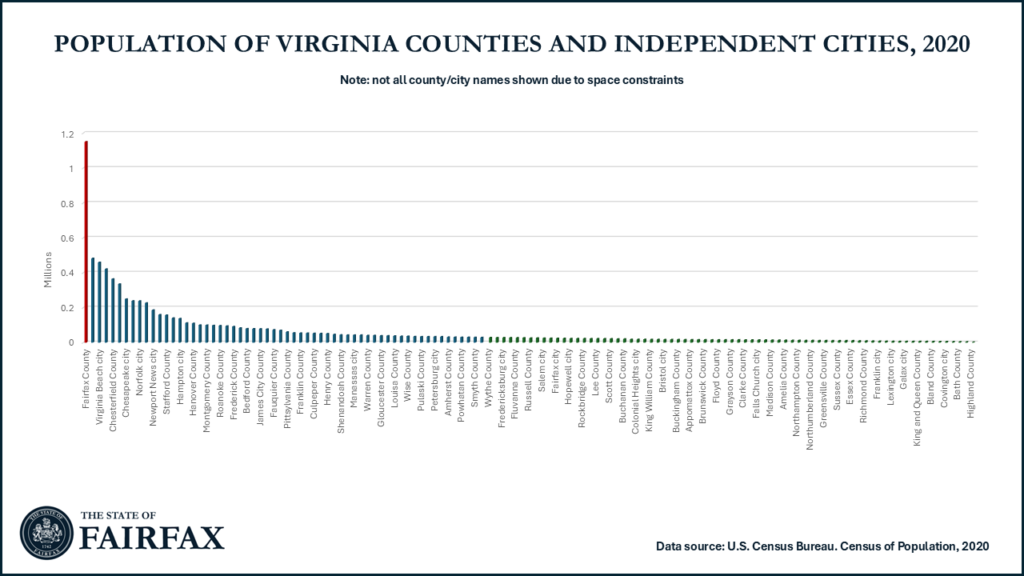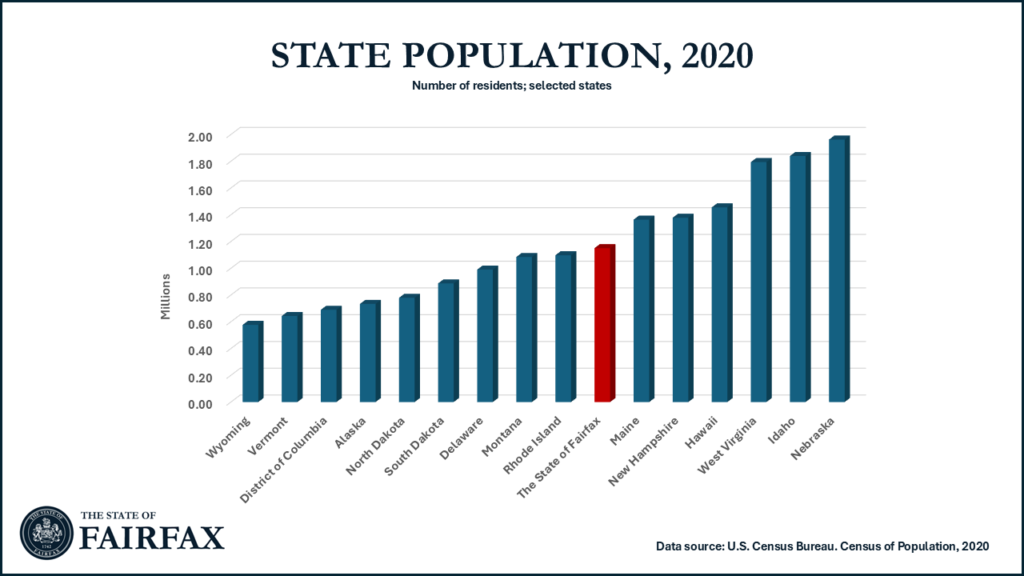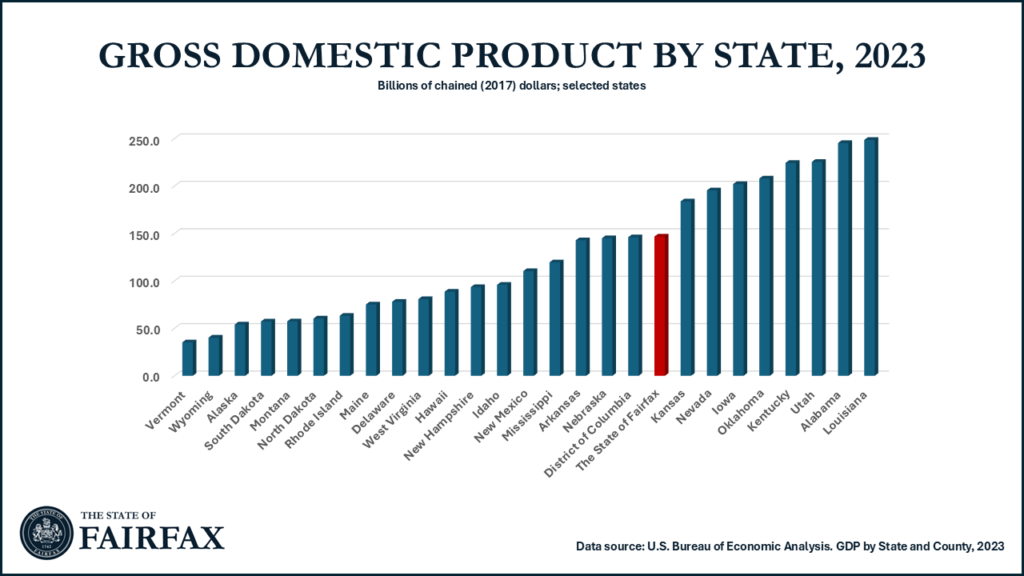The Commonwealth of Virginia has 95 counties and 38 independent cities. Yet, Fairfax County is unique within the commonwealth. With a population of over 1.1 million residents, it is by far the most populous county in Virginia.

Fairfax is more like a state than a local government
In order to understand how much of an outlier Fairfax County really is as a local government in Virginia, consider the following facts:
- More than one out of every eight Virginians is a Fairfax County resident (13.5 percent of Virginia’s 8.6 million residents, to be precise, based on the 2020 Census).
- Its population is more than 20 times bigger than a ‘typical’ county government in Virginia (with a typical county or independent city in Virginia having a population of around 50,000 residents).
- Fairfax County has a greater population than Virginia’s 73 least populous counties and independent cities combined (shaded green in the figure above).
In many ways, Fairfax County is more like a state than a local government. If Fairfax County were a state, its state population would be larger than the District of Columbia and larger than 8 other states in the Union.

Not only does Fairfax County have a large population (matching some U.S. states), but Fairfax is an economic and fiscal powerhouse. Fairfax County’s Gross Domestic Product (GDP) is 146 billion dollars, with an economy larger than 17 states and the District of Columbia (state GDP).

Fairfax County’s median household income of 150,113 dollars is more than 50% above Virginia’s median household income level ($90,974). Fairfax County’s General Fund budget is a whopping 5.7 billion (and a total budget of 11.1 billion dollars). The county government employs over 12,000 people, while Fairfax County Schools—its dependent school district—employs over 40,000 teachers and staff (or 25,743 FTE positions). Fairfax County residents’ contribute 16.4 billion in individual income taxes to the Internal Revenue Services and 3.98 billion dollars in individual income taxes to the Commonwealth.
Being treated as a local government is a major disadvantage for Fairfax
Treating Fairfax County as a local government—without recognizing its unique size and position in the Commonwealth—results in a number of challenges for its residents:
- Fairfax’s 1.1 million residents and businesses receive local services on a one-size-fits-all basis from a single county government; this prevents residents from locating in smaller local jurisdictions that could offer them their preferred mix of local services and local taxes;
- Due to the large population and the relatively small Board of Supervisors, local political representation within Fairfax is much more limited than in the rest of the commonwealth;
- Despite its major contributions to the commonwealth budget and despite representing a major share of the commonwealth’s electorate, Fairfax is greatly constrained by one-size-fits-all laws and rules made for local governments by the commonwealth;
- Fairfax serves as the “golden goose” for the state, contributing disproportionately to the commonwealth budget, while getting little back in return.
Evidence-informed policy making requires high-quality analysis
Participatory democracy and evidence-informed policymaking requires using data, research, and evaluations to guide decisions, rather than relying solely on intuition or political opinion, to improve community outcomes.
As President John F. Kennedy once said: “No country can possibly move ahead, no free society can possibly be sustained, unless it has an educated citizenry whose qualities of mind and heart permit it to take part in the complicated and increasingly sophisticated decisions that pour not only upon the President and upon the Congress, but upon all the citizens who exercise the ultimate power…”
In other words, a free, democratic society requires informed elected representatives (at federal, state, and local level) and an informed citizenry who do not only have access to data, but who also have access to high-quality analyses that allow them to participate in policy deliberations and ultimately, ensure evidence-informed policy decisions.
Considering the state of Fairfax by considering the State of Fairfax
Given the economic, fiscal, political, and demographic relevance of Fairfax County, it is important to consider the state of Fairfax and to inform policy dialogues about the governance of Fairfax county with evidence. This blog—as the first in a series—aims to consider the state of Fairfax by considering Fairfax as a State.
The ambition of this site is to apply evidence-based analyses to explore important issues related to the governance, administration, public finances, public services, and economy of Fairfax County, the Northern Virginia region, and the rest of the Commonwealth of Virginia.

